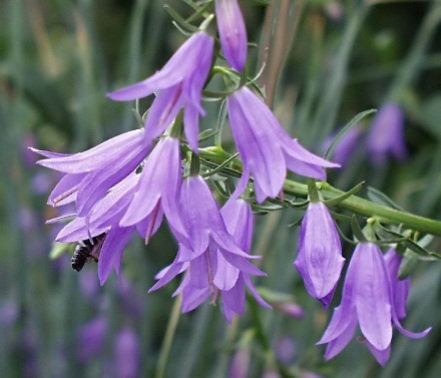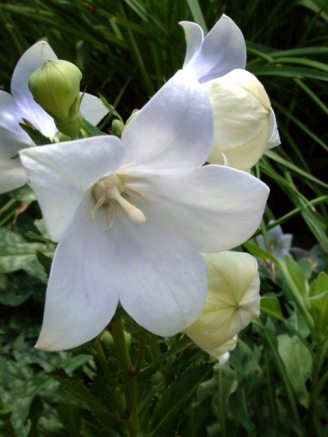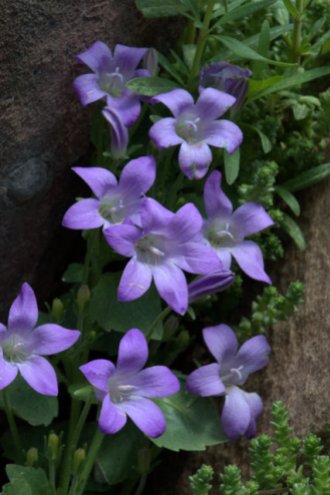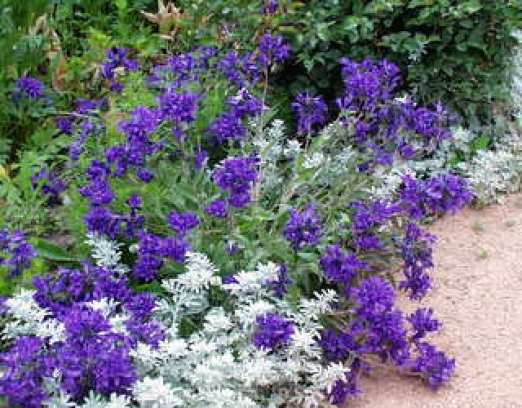Campanulaceae is a family of plants with members ranging from the towering palm-lobelias of Africa to cottage garden flowers with names from a child’s book of fairytales: Canterbury bells, Cup and Saucer Vine, Harebells, and Fairy’s Thimbles. Two familiar genera, Campanula and Lobelia, are members of this family.
More commonly known as bellflowers, Campanula flowers come in a variety of shapes, not just bells but also stars, cups, tubes, and the inflated spheres of Balloon Flower buds (Platycodon sp.).
Lobelia, a diverse genus, includes both the familiar annual blue flowers often seen in hanging baskets, and the bright red perennial Cardinal Flower, a now-cultivated wildflower native to eastern North America. Note that in this case, the flowers are quite different, with three petals pointed downward and two upward.
Campanulaceae may be annuals, biennials, or perennials. While the majority are herbaceous plants, some have woody stems, or are succulents. Their habitats range from alpine tundra to the tropics, and dry rocky desert to wetlands and ponds. With so much variation, what characteristics do these family members have in common?
The bell-shaped flowers give the family its name (Campanula means “little flower”). What would have been three to eight petals have united to form one corolla. If you look closely, you’ll see that these flowers have both male (stamen with anthers) and female (pistil) parts, although the anthers may be fused into a tube. In the genus Campanula, this corolla may be cup or star-shaped, while (in spite of those in the photos above) Lobelia often has tube-shaped flowers. The flowers are most often blue to purple, although other colors are possible.
In addition, the sap is usually (but not always) a white latex. There are other, more technical ways of identifying Campanulaceae, but I doubt any of us will be examining the cells to see whether they store food as the polysaccharide inulin (as do these plants) or the more usual starches.
Granted, flower shape isn’t much to go on, but as you look at these photos, you can begin to get a sense of what belongs and what doesn’t.
For the most part, family members are welcome as garden plants. Given the colors and shapes of the blooms, it’s no surprise that the flowers attract hummingbirds (and honeyeaters, in other parts of the world. Other pollinators include bees, butterflies and moths, bats, and reportedly, lizards.
Of course, every family has its black sheep, and Creeping Bellflower (Campanula rapunculoides) plays that role perfectly. It’s innocuous at first—a small plant with pleasing leaves and long stems lined with pretty purple flowers. You admire it, letting it grow for a bit. But eventually, you realize that it has a mind of its own, and you go to pull it out. That’s when you discover that Creeping Bellflower is a thug.
While I grow these plants for their pretty flowers, others cultivate them for the many chemical compounds they produce. Some are poisonous, but others are used to treat breathing disorders such as asthma, or to help smokers quit. And the spinach-like leaves and radish-like roots of at least one species, C. rapunculus, Rampion Bellflower, were once eaten across Europe.


















